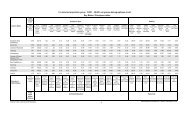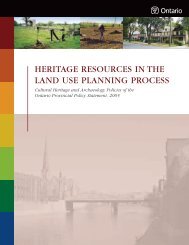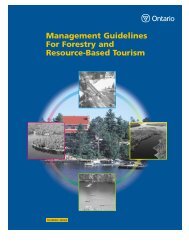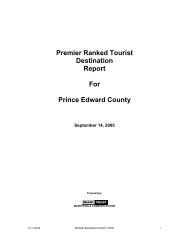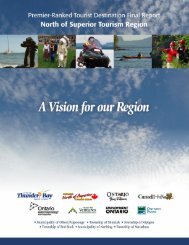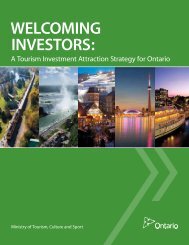Factors Influencing Visitor's Choices of Urban Destinations in North ...
Factors Influencing Visitor's Choices of Urban Destinations in North ...
Factors Influencing Visitor's Choices of Urban Destinations in North ...
You also want an ePaper? Increase the reach of your titles
YUMPU automatically turns print PDFs into web optimized ePapers that Google loves.
Table 19: Residuals as a Percentage <strong>of</strong> Total Visits <strong>in</strong> Model 5BCity # <strong>of</strong> Visits (In Millions) Residuals, % <strong>of</strong> # <strong>of</strong> VisitsVancouver 4.29 -83.42%Detroit 3.26 -83.49%Fort Lauderale 2.51 -105.17%Source: Global Insight, Inc.K. Impact <strong>of</strong> Attraction Type on VisitationsOne <strong>of</strong> the key objectives <strong>of</strong> this study was to use the attractions database to build crosssectionaleconometric models to expla<strong>in</strong> the impact <strong>of</strong> attractions on visitations. Theestimated coefficients from these models provided an assessment <strong>of</strong> the relativeimportance <strong>of</strong> various attractions <strong>in</strong> expla<strong>in</strong><strong>in</strong>g the number <strong>of</strong> tourist visitations.However, these coefficients were estimated based on a sample <strong>of</strong> 50 cities and providedan average estimate across all cities <strong>in</strong>cluded <strong>in</strong> the sample. Therefore, additional analysiswas done to better understand the implied impacts on Toronto and Ottawa.For this analysis, Global Insight has utilized the concept <strong>of</strong> elasticity. For this study,elasticity is def<strong>in</strong>ed as the percentage change <strong>in</strong> visitors divided by the percentage change<strong>in</strong> attractions.Elasticity city = % change <strong>in</strong> visitors city (5)% change <strong>in</strong> # <strong>of</strong> attractions cityIf we assume that the new attractions would be typically added only one at a time, thedef<strong>in</strong>ition <strong>of</strong> elasticity reduces to the follow<strong>in</strong>g equation.Elasticity city = β*(A 0 / V 0 ) (6)Where:A 0 - the current number <strong>of</strong> like attractions <strong>in</strong> a particular city; 18V 0 - the current number <strong>of</strong> visits <strong>in</strong> a particular city;β - the estimated coefficient from one <strong>of</strong> the model equations.A higher exist<strong>in</strong>g ratio <strong>of</strong> visitors per attraction will result <strong>in</strong> a lower elasticity (<strong>in</strong> theequation (6) a lower value <strong>of</strong> attractions per visitor). This means that if a city already hasa good return on its current base <strong>of</strong> attractions, it will have a lower response from add<strong>in</strong>gan additional attraction <strong>of</strong> the same type relative to other cities.18 In the case where the current number <strong>of</strong> like attractions is zero (i.e., no such attraction exists <strong>in</strong> the city <strong>of</strong><strong>in</strong>terest), Global Insight uses the average <strong>of</strong> the current number (zero) and the number after the addition(one) for A 0 . In this case, A 0 = 0.5.30


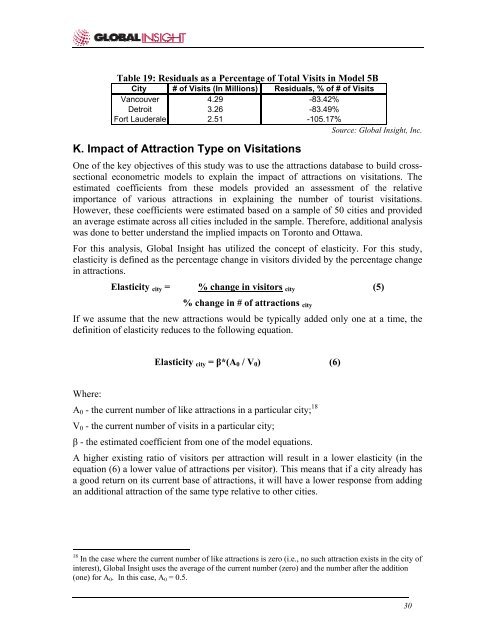
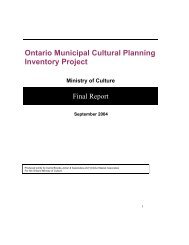
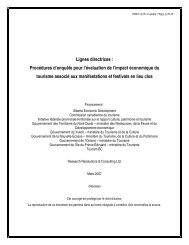
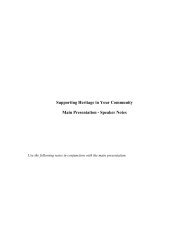
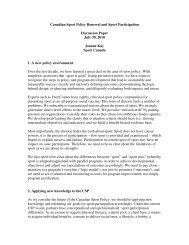
![THIS AGREEMENT made this [date], between [name of owner] (the ...](https://img.yumpu.com/49827605/1/158x260/this-agreement-made-this-date-between-name-of-owner-the-.jpg?quality=85)

